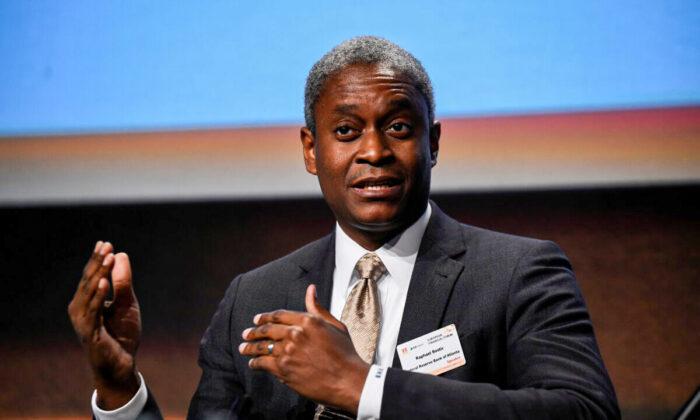Atlanta Federal Reserve Bank President Raphael Bostic said Monday he has penciled in a total of six interest rate hikes this year and two for 2023, fewer than most of his colleagues as he worries about the effects of Russia’s invasion of Ukraine on the U.S. economy.
“Getting the high rates of inflation under control is the top concern for me for 2022,” Bostic said in remarks prepared for delivery to the National Association for Business Economics, noting also that it is critical to address the significant imbalance between labor supply and demand.
But, he added, “the elevated levels of uncertainty are front forward in my mind and have tempered my confidence that an extremely aggressive rate path is appropriate today.”
The Fed last week raised interest rates in its first rate increase since 2018, hiking them from near-zero in a bid to tame inflation that is currently running above 6 percent, three times the central bank’s target.
Most Fed policymakers see rates rising to at least 1.9 percent by the end of the year, a pace equivalent to a quarter point increase at each of the year’s six remaining Fed meetings, with four more expected next year.
Bostic said he sees the Fed’s neutral rate at 2.25 percent and cannot predict with much certainty if his own forecast on rate hikes this year will hold.
“It could go faster than that if developments occur in such a way that it seems that that’s warranted or it could go slower. I am truly observing and adapting in real time because it just seems there is so much going on,” Bostic said. “The world is continually surprising me.”
Bostic said Monday the job market is tight, noting it is “critical” to restore balance to labor supply and demand. But he added that he believes current high wage growth, which overall is still below the rate of inflation, reflects employers trying to keep employees from falling behind on pay rather than a permanent feature of the labor market.
The Atlanta Fed chief said the conflict in Ukraine will put further upward pressure on prices for commodities like oil and wheat but also more broadly as businesses retool their supply chains.
Both conditions will likely exacerbate already intense inflation pressure; on the other hand, the risks “go both ways,” with uncertainty fed by conflict likely to reduce economic activity, he said.
“Should demand falter in the face of economic uncertainty or removal of monetary policy accommodation, then the appropriate path may be shallower than I currently project,” Bostic said. “But there are other developments, such as shifts in supply strategies, that could mean higher costs and thus motivate a steeper policy path than I expect.”
Bostic’s remarks came at the start of a conference just hours before Fed Chair Jerome Powell is also expected to speak, and investors will be watching closely for fresh clues on the likely rate path ahead.





